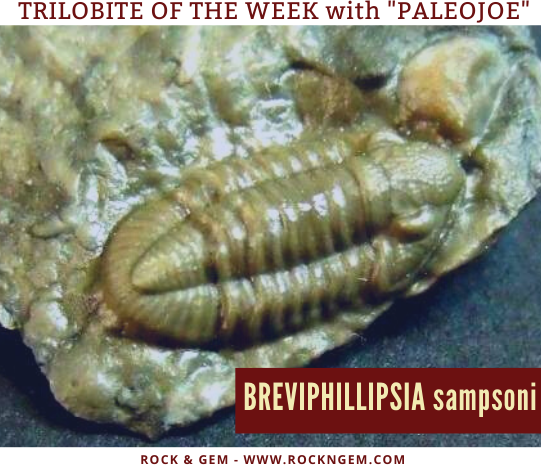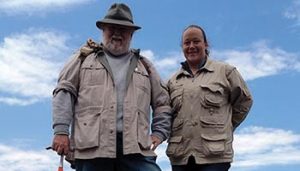
By Joseph “Paleo Joe” Kchodl
As you may be well aware, trilobites are an extinct form of arthropod related to insects, crabs, crayfish, and horseshoe crabs. These creatures are called trilobite due to the three distinct “lobes” running vertically through the body section. In this week’s trilobite review, we’re looking at BREVIPHILLIPSIA sampsoni.
As we near the Permian Period, trilobites get fewer and far between. As the great Permian extinction is about to happen, the number of trilobite families drastically reduces.
The BREVIPHILLIPSIA sampsoni is a fine example of one of the last trilobites from the Mississippian portion of the Carboniferous Period. It has a triangular-shaped cephalon and pygidium, and large crescent-shaped eyes set high. It has a very broad axial lobe with thinner pleural lobes and fine granules or tubercles covering the exoskeleton.
Averaging around one inch long, they can be found in the Choteau formation in Saline County, Missouri.

About the columnist: Joseph “PaleoJoe” Kchodl is a paleontologist, educator, veteran, author, fossil dig organizer/guide, business owner, husband, father, and grandfather, and fossil fanatic. For decades, he’s spent hours in classrooms around the Midwestern United States and beyond, speaking to school children about fossils and fossil hunting. Visit his site to purchase fossils, contact PaleoJoe, visit www.paleojoe.com.
Plus, learn more about PaleoJoe and his daughter PaleoJen and their paleontology exploration partnership in an the article “Fueling a Passion for Paleontology“.












